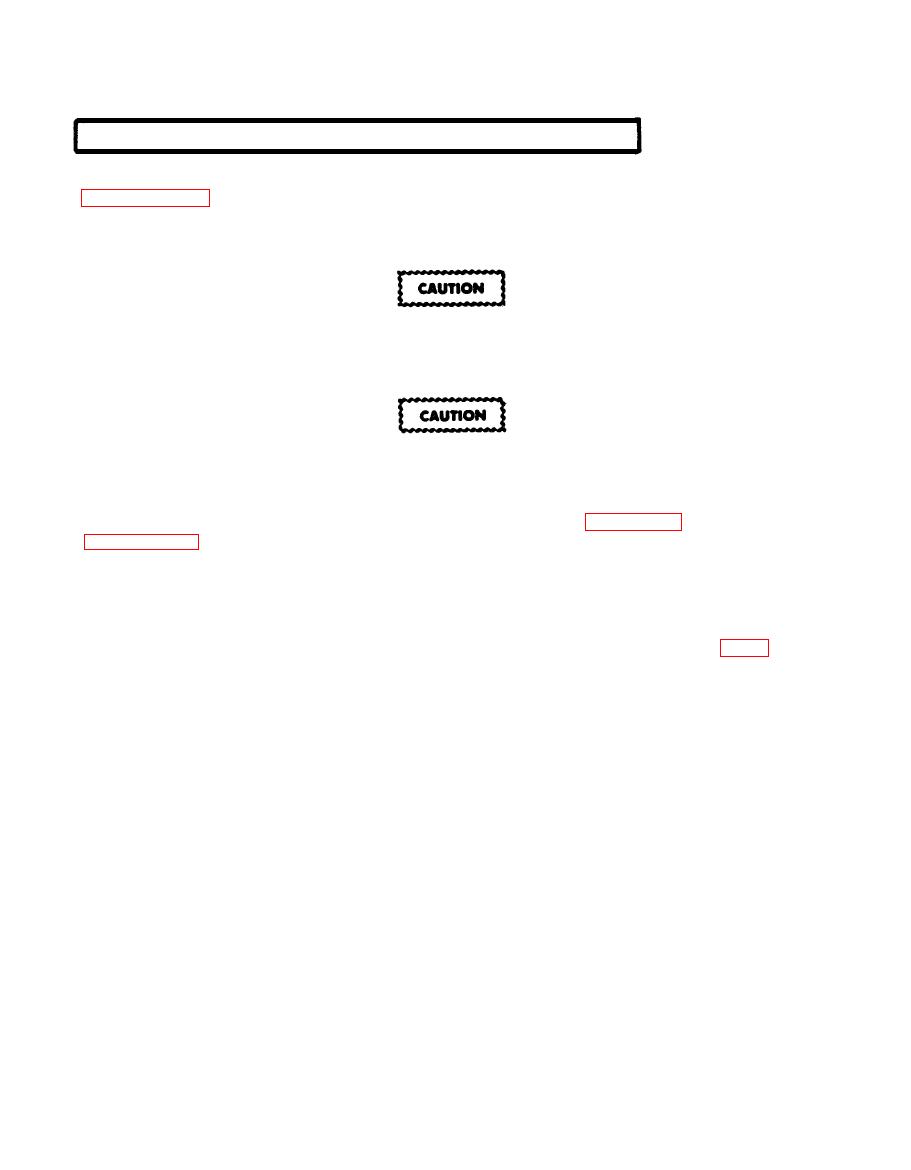 |
|||
|
|
|||
|
Page Title:
PURGING THE REFRIGERANT SYSTEM.-Continued |
|
||
| ||||||||||
|
|
 TM5-4120-383-14
5-12.
PURGING THE REFRIGERANT SYSTEM.-Continued
The refrigeration system must be purged with dry nitrogen, item 8,
flow of dry nitrogen at the rate of 1 - 2 cfm (0.028 - 0.057
3
m /minute) should be continued during all brazing operations to
minimize internal oxidation and scaling.
Nitrogen cylinders are pressurized containers. The
pressure in the cylinder can exceed 2000 psi. A
nitrogen pressure regulator should be used at all
times when nitrogen is used for leak check or purge
operations.
Nitrogen is an inert gas; however, it also presents
danger as a suffocant and, therefore must also be
discharged in a ventilated location.
Assuming that the system has been discharged (para 5-11), see
See specific component removal instructions.
a.
It may be
necessary to remove top rear cover prior to connecting hoses to
service valves.
b. Be sure that refrigerant has been discharged.
(See para
5-11.)
c. Connect center hose from charging manifold to a nitrogen
regulator and dry nitrogen bottle.
d. The hose from the high pressure charging valve to the
charging manifold should be connected.
e. The hose from the low pressure charging valve should be
disconnected from the charging manifold.
f.
Open both charging valves on unit.
g. Close the unused valve on the charging manifold and open the
one connected to the high pressure hose.
h. Open the nitrogen cylinder valve and adjust the regulator so
3
that approximately 1 - 2 cfm (0.028 - 0.057 m /minute) of nitrogen
flows through the system.
i. Check discharge from hose attached to the low pressure
charging valve to be sure that no oil is being forced out of the
system.
5-29
|
|
Privacy Statement - Press Release - Copyright Information. - Contact Us |